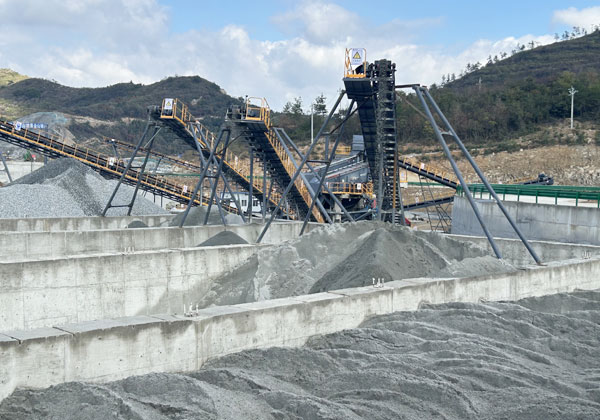Vibrating screens are crucial components in a gravel plant, playing a central role in separating different sizes of materials and ensuring the production of high-quality aggregates. A gravel plant processes raw materials such as stones, rocks, and sand to produce aggregates suitable for construction, road work, and other industrial applications. The vibrating screen’s function is to classify and separate these materials into specific grades or sizes, ensuring that the final product meets the required standards.

Key Functions of Vibrating Screens in Gravel Plants
- Separation of Materials: The primary function of a vibrating screen in a gravel plant is the separation of materials based on their size. Gravel, which is often composed of a mixture of large and small stones, is screened to segregate different particle sizes. The screen mesh allows the smaller materials to pass through, while the larger materials are retained. This ensures that the plant produces aggregates with consistent sizing, which is critical for their intended use.
- Sizing and Classification: After the initial crushing and processing of the raw material, vibrating screens help to classify the aggregate into various size categories. These categories may include coarse aggregates, fine aggregates, or sands. By accurately sizing and classifying the material, vibrating screens help the gravel plant produce high-quality products that meet construction specifications. For example, fine sand may be used for concrete production, while larger gravel sizes are used for road base construction or concrete aggregates.
- Screening Efficiency: Vibrating screens can operate in multiple configurations to achieve the desired efficiency. They can be designed with various screen meshes depending on the size of the material to be separated. A fine screen will effectively separate small particles, while a coarse screen will retain larger stones. The efficiency of the screen affects the overall throughput of the gravel plant, ensuring that the production is not delayed by inefficient separation processes.
- Material Flow and Handling: Vibrating screens help to manage the flow of material through the gravel plant. As the material is fed onto the screen, the vibration helps to move it across the surface, facilitating the separation process. The design of the screen, such as the angle and frequency of vibration, can be adjusted to optimize material handling. This ensures that the material is screened efficiently and is easy to transport to the next stage in the processing line.
- Improved Product Quality: A well-designed vibrating screen improves the quality of the final product. By separating different sizes of aggregate with precision, the vibrating screen ensures that the plant produces high-quality gravel that meets the specific requirements of the market. For example, a gravel plant may need to produce aggregate with a particular gradation for specific concrete applications. The vibrating screen ensures that the correct size fractions are produced.
- Durability and Maintenance: Gravel plants deal with harsh working conditions, and vibrating screens must be built to withstand constant vibration and the abrasive nature of the material. High-quality vibrating screens are made with durable materials such as stainless steel or heavy-duty mesh to ensure long-lasting performance. Routine maintenance and proper operation are essential to avoid breakdowns and ensure the smooth running of the plant.
In a gravel plant, vibrating screens are indispensable for ensuring the efficient separation and classification of materials, helping to produce aggregates of varying sizes. Their ability to improve throughput, enhance product quality, and maintain material flow makes them a core part of the gravel processing system. A well-maintained vibrating screen will contribute to the overall productivity and profitability of the gravel plant, delivering high-quality products that meet industry standards.
